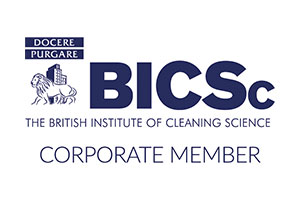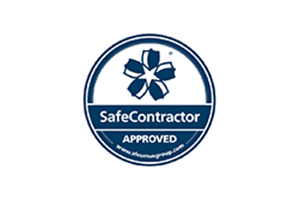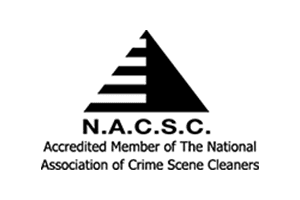How To Remove Black Mould From Silicone Sealant Naturally
- What is black mould?
- What causes black mould to grow on silicone sealant?
- Natural black mould removers
- How to remove black mould from silicone
- Get in touch
Black or dark spots on the silicone sealant in your bathroom, kitchen, and around windows is a common sight in UK homes. You must have this mould removed as soon as you spot it to protect your home against further mould growth, and avoid the health risks it can pose.
Here at ICE Cleaning, we offer our mould removal services nationwide. No matter where you are in the UK, if it's an emergency, we can be on site within a matter of hours. Our nine-stage mould remediation process can eliminate all the mould in your property, including mould in the air.
Keep reading to learn how to remove black mould from silicone sealant naturally.
What is black mould?
Mould is a type of fungus that thrives in damp environments. It reproduces by releasing spores into the air which, when they land on moist surfaces, begin to grow and spread. Although lots of different types of mould are often found within homes, black mould is the most famous kind due to its reputation for being a toxic and deadly type of mould.
Some kinds of black mould, like Stachybotrys chartarum (a greenish-black mould), produce mycotoxins, toxic compounds which can trigger serious health problems. However, not all kinds produce these harmful chemicals.
Black mould favours materials high in cellulose such as wood or paper, but can also often be spotted growing on the silicone sealants around sinks and bathtubs. The other kinds of black mould that usually grow in the home include:
- Cladosporium: this can release mycotoxins and appears as brown, black, or green spots
- Alternaria: this is a velvety-looking mould that can be olive green, brown, grey, or black
What causes black mould to grow on silicone sealant?
When you see mould growth on silicone, it is important to note that the fungus is not actually growing on the waterproof sealant itself. When gaps form in the sealant, water is able to get behind it and can cause mould to grow. This mould can then spread to the surface of the silicone.
Silicone sealant is particularly vulnerable to mould growth as it is usually used in bathrooms, kitchens, and around windows, areas that provide mould with its ideal conditions for growth.
Dampness and poor ventilation
The constant exposure to water from showers and baths creates persistent moisture on surfaces. Silicone sealant absorbs some of that moisture, making it an ideal breeding ground for mould spores. Bathrooms and kitchens that are not adequately ventilated are particularly vulnerable to mould growth.
A lack of light
Bathrooms often lack natural light which can inhibit the growth of beneficial microorganisms that typically compete with mould. Without these microscopic allies, black mould has free reign over your silicone sealants.
Soap residue and organic material
Silicone's non-porous surface may seem resistant to mould, but there is often plenty of material on it that mould can feed off. Soap scum, dust, skin cells, and dirt provide mould with a nutrient-rich layer that can enable black mould to thrive.
Condensation
Black mould on silicone sealant around windows is usually caused by warm, humid air coming in contact with the cold window pane and causing condensation to form. This condensation can drip off the windows, making the surrounding area, including the sealant, damp.
Natural black mould removers
When it comes to tackling black mould in the home, many people turn to natural remedies. These might seem like a good idea because they are readily available and are perceived as "non-toxic", but most DIY methods cannot effectively remove mould and may even make the situation worse.
Vinegar
A common household item often recommended for cleaning purposes is vinegar. It's famed for its acidic nature, which is effective in eliminating certain bacteria and viruses. However, when you use vinegar on silicone sealant affected by black mould, it usually only tackles surface-level staining. It will not be able to penetrate deeply enough to remove all traces of the stubborn fungus or prevent its return.
Baking soda
Another popular natural mould remover is mixing baking soda and water into a paste, and applying it liberally onto the affected area before scrubbing at the mould. While baking soda does have mild abrasive qualities which can help lift some stains from surfaces, this method is not effective against deep-rooted mould infestations.
Hydrogen peroxide
You might also hear about hydrogen peroxide being used as a bleach alternative in anti-mould efforts. The fizzing action is thought to be helpful in breaking down fungal structures, but it lacks the potency compared with specialised treatments and will therefore not be a permanent mould removal solution.
How to remove black mould from silicone
You must bring in professional mould removers as soon as you spot mould growth in your home. Mould exposure can cause serious health problems ranging from an allergic reaction to lung infections and fatal asthma attacks.
Not only are the natural DIY remedies mentioned above not effective and therefore cannot make your home safe again, scrubbing the mould can aggravate it, causing it to release spores. These spores can travel to other parts of your home and lead to a mould problem elsewhere. You may inhale these harmful spores during the mould removal, as well.
The benefits of professional mould removal
Professional mould cleaners can give you peace of mind that the problem is dealt with for good. Seeking help from experts comes with a number of other advantages, too:
- Safety: Professionals are equipped with appropriate protective gear to protect their health during the cleaning. They will also isolate the affected area to stop spores spreading.
- Efficacy: They use powerful fungicides approved by health agencies capable of penetrating deeper surfaces where regular household products cannot reach ensuring thorough removal.
- Lasting results: With their specialised knowledge professionals don’t just clean; they can advise on how best to prevent reoccurrence. You can find out more about how to prevent mould on silicone sealant in this blog.
Get in touch
We operate 24/7, 365 days a year, including bank holidays. We also offer a lifetime guarantee* with every mould remediation so in the unlikely event it comes back, we can remove it again for free.
To book our technicians for mould removal, contact our team on 0208 066 0360 or enquiries@icecleaning.co.uk.
*subject to advisories

Speak with me today,
I’m here to help
By asking you a few questions either via phone or email I can immediately provide a realistic estimation of the cost.
You’re in good company. We’ve cleaned for the following commercial clients… View all

Why choose us?
- Cater to a wide variety of cleaning situations
- Nationwide coverage, available 24/7
- Cater to commercial and domestic clients
- Free survey provided prior to quotation
- Emergency response team
- Offer a bespoke service designed to suit all your needs
- All technicians hold professional health and safety qualifications, including BICSc, IOSH, Dewpoint Professional & Safe Contractor
We’re fully accredited
We place best practise, professional expertise and health and safety at the core of our business. We’re fully compliant with all legal obligations. You can view a list of our accreditations below, or visit our Health & Safety page for more information.











-RGB-small.1707319151.jpg)




















